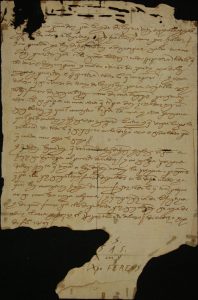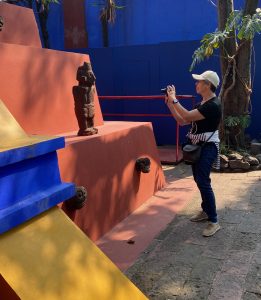During the great Age of Exploration, from the 15th century to the early 17th, there was usually a man on board each sailing ship, if not the captain himself, who took careful notes. How else would we have learned of their voyages and exploits on their return?
Love him or hate him, Christopher Columbus was particularly good at this. “Columbus’s 1492 Journal,” I read online from the King’s College Library, “even in the truncated and partially summarised form in which it has survived, gives an unrivalled insight into the events of the voyage, Columbus’s first impressions of a people and a culture which failed in so many ways to live up to his expectations, and the creation of many of the myths surrounding the New World which have coloured its view of itself down to the present day” (https://ems.kcl.ac.uk/print/b001.html ).

Fast-forward now to our own age and explorations:
Travel, like food, I feel, invites sharing — Come, partake of my experience! See what I saw, taste what I tasted, meet those I met! – if only in less-than-perfect written words or quickly snapped photos. We strive to capture the moments, preserve them, as our own memory-joggers and as conversation-starters with friends and family.
“It’s a wonderful thing to do, no question, for both practical and sentimental reasons,” agrees blogger and podcaster Debbie Weil, in her newest post, “How [Not] to Keep a Travel Journal” (https://debbieweil.substack.com/p/how-not-to-keep-a-travel-journal).
“It’s your souvenir scrapbook and a future travel guide,” Debbie says. “It’s a place to record impressions for a future writing project. Here’s where you build a trove of new sensations of sight, sound and smell. Surely you will draw on them later; otherwise you’ll forget!” She then suggests in her post practical ways to overcome the pitfalls.
When my friend from Paris, Marie-Laure, was here for a visit recently, I was reminded of her method of documenting her travels. She’s an avid amateur photographer and always has been. As a former teacher, she traveled widely every summer holiday from teaching. She’s been all over the world – and has the photos and notes to prove it. She stops to photograph almost everything and documents it all in writing every evening — where she went and what she saw that day.

This was not Marie-Laure’s first visit to San Miguel, however. The first was in the summer of 2016, and I wrote about that visit and our long friendship and many travels in a blogpost at that time (www.blog.bonnieleeblack.com/mi-amiga-de-francia/).
While here this time she tried to jog my memory: “Remember when we went to… and saw…?” I’d forgotten, frankly. That was seven years ago; I can barely remember what I saw and did yesterday. Then she surprised me with a little book she’d put together for me of photos of that previous visit. Turning its pages in my hand brought back all of the memories I was afraid I’d forgotten.

Marie-Laure, now seventy-five, has lived in Paris all her life. I, on the other hand, have lived here and there, in various countries of the world, for various stretches of time before settling in normally sunny (but not this week!) San Miguel de Allende, Mexico. Happily, Marie-Laure, my lifelong adventurous French friend, has made a point of visiting me wherever I’ve lived.
She visited me when I lived in Ségou, Mali, and of course took many lovely photos while there – a number of which appear in her just-published French edition of my Mali book, How to Make an African Quilt: The Story of the Patchwork Project of Ségou, Mali.
This was her second surprise for me on this recent visit: In the ten years since my Mali book was published, she had, with my blessing, translated and adapted it, and it has just been published in paper and e-book form by a publisher in Finland as Patchwork Africain: Histoire du Projet Patchwork à Ségou au Mali. (For more about this, please go to: https://www.atramenta.net/ebooks/patchwork-africain/1274/.)
It has always been my hope and prayer that a reader of this Mali book would be inspired to help the Patchwork Project stay alive after my departure from Mali. Since Mali is a Francophone country, which has long historical ties with France, perhaps a French reader will be more likely to do so than any English-reading reader has been. Vamos a ver! (we’ll see), as we say here in Mexico.
As for my own favorite method of documenting my foreign travels and sojourns, I’ve always favored my beloved written word. In the decades before e-mail, I wrote long, detailed letters home from overseas – first to my mom, then to other family members and friends. All of these loved-ones saved my letters and gave them back to me, and these letters became invaluable resources when I wrote my three Africa memoirs.
I’m sure I don’t need to tell you — whether you’re a writer or a photographer, a note-taker or a voice-recorder, whatever medium you call your own – keeping a lasting record of your travels will extend your experiences indefinitely. Travel itself enlarges our minds and hearts – teaches us about the worth and accomplishments of distant peoples (in ways we should have but didn’t learn in school). Documenting those travels, a little like the early explorers did in their day, keeps those experiences alive.
